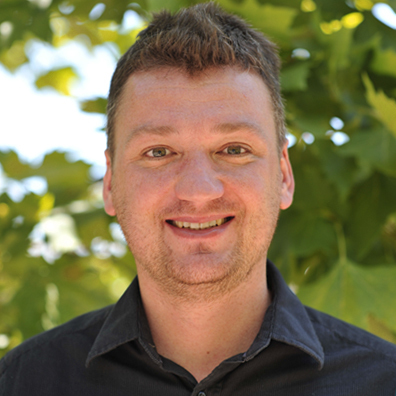Christopher Patzke John M. and Mary Jo Boler Assistant Professor

Research Interests:
Genes, Proteins and Mutations: How do they shape, contribute to and compromise the function of the human brain? We ask how individual genes in human nerve cells contribute to the proper functioning of neuronal communication and dysfunction in disease.
Our lab focuses on the role of cell adhesion, synaptic signaling and neuromodulation of signal transmission. These are crucial elements in the process of building and maintaining cellular interactions establishing the dynamic wiring of the nervous system existing during the entire lifespan of a person. Human perception, feelings, and actions depend on the proper development and functioning of synapses that are disrupted in many neurological and psychiatric diseases. A systematic understanding of the function and structure of the human synapse is essential for the quest of therapies in order to cure disorders on the level of their causes and not only on the level of their symptoms.
We use human pluripotent stem cell-derived neuronal cells as a tool to model human genetic neuropathological conditions but also as means to understand the molecular basis of human cellular neurobiology. By combining technologies, such as genetic engineering, cell imaging, biochemistry, brain organoid cultures and physiology, we investigate the formation of the human nervous system and impairment by mutations.
Biography:
- John M. and Mary Jo Boler Assistant Professor in the Department of Biological Sciences, University of Notre Dame (2020-Present)
- Postdoctoral Research Fellow and Research Associate in the Department of Molecular and Cellular Physiology, Stanford University (2012-2020)
- Postdoctoral Research Fellow, Developmental Neuroscience, Max-Delbrück-Center for Molecular Medicine, Berlin, Germany (2009-2011)
- PhD, Max-Delbrück-Center for Molecular Medicine and Free University, Berlin, Germany (2009)
- Diploma in Biology, Free University, Berlin, Germany (2004)
- Maîtrise in Cellular Biology and Physiology, Paris IV and Ecole Normale Supérieure, Paris, France (2002)
Recent Papers:
- Patzke C, Dai J, Brockmann MM, Sun Z, Fenske P, Rosenmund C, Südhof TC. CB1 receptor activation rapidly alters synaptic vesicle numbers in mouse hippocampal synapses. Mol Psychiatry. 2021 Nov;26(11):6103. doi: 10.1038/s41380-021-01426-1. PMID: 35031784
- Dai J, Patzke C, Liakath-Ali K, Seigneur E, Südhof TC. GluD1 is a signal transduction device disguised as an ionotropic receptor. Nature. 2021 Jul;595(7866):261-265. doi: 10.1038/s41586-021-03661-6. Epub 2021 Jun 16. PMID: 34135511
- Patzke C, Dai J, Brockmann MM, Sun Z, Fenske P, Rosenmund C, Südhof TC. Cannabinoid receptor activation acutely increases synaptic vesicle numbers by activating synapsins in human synapses. Mol Psychiatry. 2021 Nov;26(11):6253-6268. doi: 10.1038/s41380-021-01095-0. Epub 2021 Apr 30. PMID: 33931733
- Mencacci NE, Brockmann MM, Dai J, Pajusalu S, Atasu B, Campos J, Pino G, Gonzalez-Latapi P, Patzke C, Schwake M, Tucci A, Pittman A, Simon-Sanchez J, Carvill GL, Balint B, Wiethoff S, Warner TT, Papandreou A, Soo A, Rein R, Kadastik-Eerme L, Puusepp S, Reinson K, Tomberg T, Hanagasi H, Gasser T, Bhatia KP, Kurian MA, Lohmann E, Õunap K, Rosenmund C, Südhof TC, Wood NW, Krainc D, Acuna C. J Biallelic variants in TSPOAP1, encoding the active-zone protein RIMBP1, cause autosomal recessive dystonia. J Clin Invest. 2021 Apr 1;131(7):e140625. doi: 10.1172/JCI140625. PMID: 33539324 Free article.
- Patzke C, Brockmann MM, Dai J, Gan KJ, Grauel MK, Fenske P, Liu Y, Acuna C, Rosenmund C, Südhof TC. Neuromodulator Signaling Bidirectionally Controls Vesicle Numbers in Human Synapses. Cell. 2019 Oct 3;179(2):498-513.e22. doi: 10.1016/j.cell.2019.09.011. PMID: 31585084
- Zhang Z, Marro SG, Zhang Y, Arendt KL, Patzke C, Zhou B, Fair T, Yang N, Südhof TC, Wernig M, Chen L. The fragile X mutation impairs homeostatic plasticity in human neurons by blocking synaptic retinoic acid signaling. Sci Transl Med. 2018 Aug 1;10(452):eaar4338. doi: 10.1126/scitranslmed.aar4338. PMID: 30068571
- Patzke C, Südhof TC. The conditional KO approach: Cre/Lox technology in human neurons. Rare Dis. 2016 Feb 18;4(1):e1131884. doi: 10.1080/21675511.2015.1131884. eCollection 2016. PMID: 27141410
- Patzke C, Acuna C, Giam LR, Wernig M, Südhof TC. Conditional deletion of L1CAM in human neurons impairs both axonal and dendritic arborization and action potential generation. J Exp Med. 2016 Apr 4;213(4):499-515. doi: 10.1084/jem.20150951. Epub 2016 Mar 21. PMID: 27001749
- Yi F, Danko T, Botelho SC, Patzke C, Pak C, Wernig M, Südhof TC. Autism-associated SHANK3 haploinsufficiency causes Ih channelopathy in human neurons. Science. 2016 May 6;352(6286):aaf2669. doi: 10.1126/science.aaf2669. Epub 2016 Mar 10. PMID: 26966193
- Patzke C, Han Y, Covy J, Yi F, Maxeiner S, Wernig M, Südhof TC. Analysis of conditional heterozygous STXBP1 mutations in human neurons. J Clin Invest. 2015 Sep;125(9):3560-71. doi: 10.1172/JCI78612. Epub 2015 Aug 17. PMID: 26280581
- Zhang Y, Pak C, Han Y, Ahlenius H, Zhang Z, Chanda S, Marro S, Patzke C, Acuna C, Covy J, Xu W, Yang N, Danko T, Chen L, Wernig M, Südhof TC. Rapid single-step induction of functional neurons from human pluripotent stem cells. Neuron. 2013 Jun 5;78(5):785-98. doi: 10.1016/j.neuron.2013.05.029. PMID: 23764284
- Patzke C, Max KE, Behlke J, Schreiber J, Schmidt H, Dorner AA, Kröger S, Henning M, Otto A, Heinemann U, Rathjen FG. The coxsackievirus-adenovirus receptor reveals complex homophilic and heterophilic interactions on neural cells. J Neurosci. 2010 Feb 24;30(8):2897-910. doi: 10.1523/JNEUROSCI.5725-09.2010. PMID: 20181587